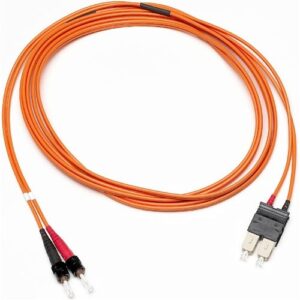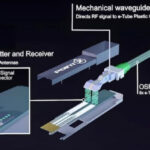The two orange cables are typically part of a fiber optic network. One cable transmits data (Tx), and the other receives data (Rx). This duplex configuration ensures fast, reliable, and bi-directional communication between devices.
In most cases, when you see two orange cables plugged into a device—especially in a data center, server room, or telecommunications setup—they’re part of a multimode fiber optic link. The orange color specifically indicates multimode fiber (OM1 or OM2) under standard network cabling color codes.
Understanding the Two Orange Fiber Cables
Here’s a breakdown of why two are used:
🔶 1. One Cable for Transmit (Tx), One for Receive (Rx)
Fiber optic systems use duplex transmission:
One cable sends outgoing data (Transmit)
The other receives incoming data (Receive)
This setup is critical for:
High-speed communication
Real-time data transfer
Minimal signal loss
✅ This is standard for SFP, LC, SC, and other common fiber connectors.
🔶 2. Orange = Multimode Fiber (OM1/OM2)
According to TIA/EIA and APWA color coding:
Orange jackets indicate multimode fiber
Used for short-range, high-bandwidth data links
Common in LAN, backbone networks, and server farms
If your cables are aqua or yellow, they may indicate different fiber types (OM3/OM4 or single-mode).
What Kind of Devices Use Two Orange Cables?
You’re most likely to find two orange cables connected to:
Network switches
Fiber patch panels
Servers with fiber NICs
Media converters
Telecommunications equipment
These devices use fiber transceivers (e.g., SFP, GBIC) that require separate Tx/Rx ports.
Is It Always Fiber?
In rare cases, orange cables could be used for:
Communication alarm wiring
AV systems
Low-voltage signaling
However, if you see two identical orange cables in an IT or network setting, it's almost certainly duplex multimode fiber.
Related FAQs (Great for SEO)
Q: Why not just one fiber optic cable?
Some newer technologies like BiDi (Bidirectional SFPs) allow single-cable transmission, but traditional setups use separate fibers for better performance and simplicity.
Q: Can I mix orange cables with other fiber types?
No—orange multimode fiber is not compatible with yellow (single-mode) without special converters.
Q: What’s the difference between orange and aqua fiber cables?
Orange: OM1/OM2 multimode (older, up to 1 Gbps over short distances)
Aqua: OM3/OM4 multimode (supports 10/40/100 Gbps over longer distances)
Final Answer Recap
If you're wondering 'why are there two orange cables connected to each device?', here's the simple answer:
They're part of a fiber optic duplex system—one cable transmits data, the other receives it. The orange color indicates multimode fiber, commonly used in high-speed local area networks (LANs).
Want to Learn More About High-Performance Power Cables?
If you're working with power distribution, electric vehicles, or industrial automation, choosing the right cable matters.
[Explore our range of high-quality THW, Type W cables →]






